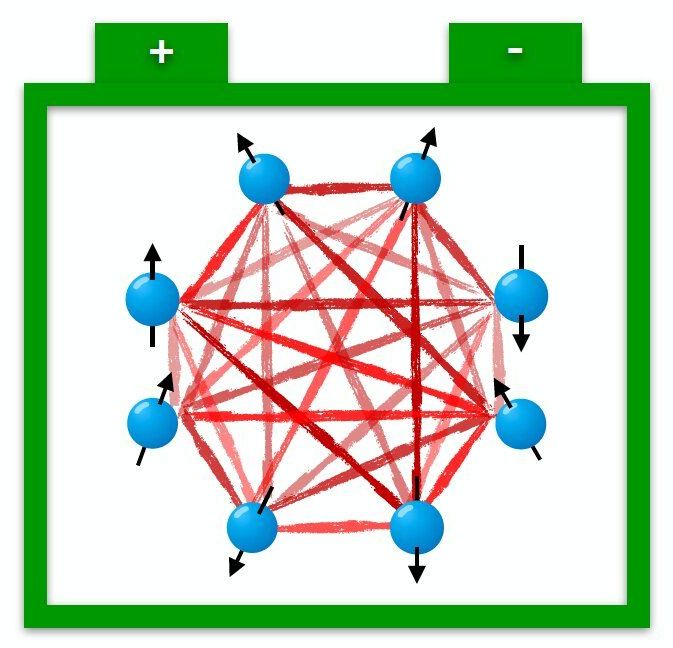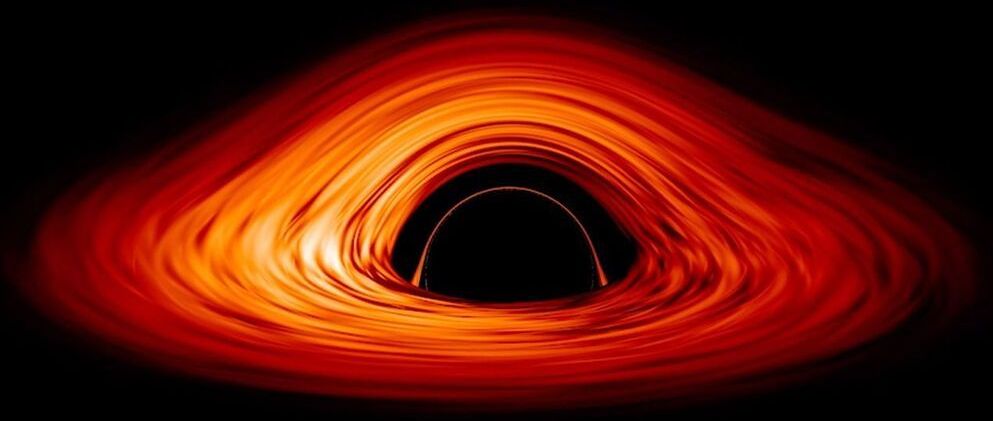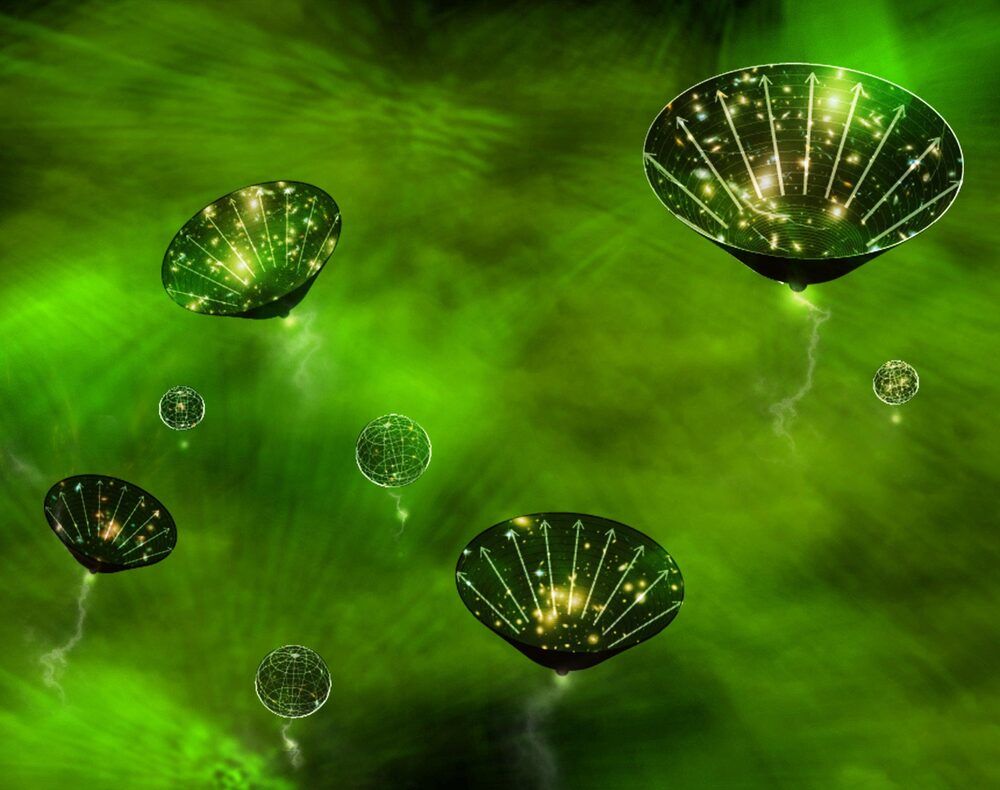When magnetic fields around a black hole reconnect, they can slow down plasma particles near the event horizon, which cause the black hole to lose energy when it swallows them.




The Sachdev-Ye-Kitaev (SYK) model, an exactly solvable model devised by Subir Sachdev and Jinwu Ye, has recently proved useful for understanding the characteristics of different types of matter. As it describes quantum matter without quasiparticles and is simultaneously a holographic version of a quantum black hole, it has so far been adopted by both condensed matter and high-energy physicists.
Researchers at University of Pisa and the Italian Institute of Technology (IIT) have recently used the SYK model to examine the charging protocols of quantum batteries. Their paper, published in Physical Review Letters, offers evidence of the potential of quantum mechanical resources for boosting the charging process of batteries.
“Previous theoretical studies laid down the idea that entanglement can be used to greatly speed up the charging process of a quantum battery,” Davide Rossini and Gian Marcello Andolina, two of the researchers who carried out the study, told Phys.org, via email. “However, a concrete solid-state model displaying such fast charging was missing, until now.”


Such primordial black holes (PBHs) could account for all or part of dark matter, be responsible for some of the observed gravitational waves signals, and seed supermassive black holes found in the center of our Galaxy and other galaxies. They could also play a role in the synthesis of heavy elements when they collide with neutron stars and destroy them, releasing neutron-rich material. In particular, there is an exciting possibility that the mysterious dark matter, which accounts for most of the matter in the universe, is composed of primordial black holes. The 2020 Nobel Prize in physics was awarded to a theorist, Roger Penrose, and two astronomers, Reinhard Genzel and Andrea Ghez, for their discoveries that confirmed the existence of black holes. Since black holes are known to exist in nature, they make a very appealing candidate for dark matter.
The recent progress in fundamental theory, astrophysics, and astronomical observations in search of PBHs has been made by an international team of particle physicists, cosmologists and astronomers, including Kavli IPMU members Alexander Kusenko, Misao Sasaki, Sunao Sugiyama, Masahiro Takada and Volodymyr Takhistov.
To learn more about primordial black holes, the research team looked at the early universe for clues. The early universe was so dense that any positive density fluctuation of more than 50 percent would create a black hole. However, cosmological perturbations that seeded galaxies are known to be much smaller. Nevertheless, a number of processes in the early universe could have created the right conditions for the black holes to form.

Scientists hope to answer three specific questions: Do the observed black holes really have event horizons? Are they as featureless as the no-hair theorem says? And do they distort spacetime exactly as the Kerr metric predicts?
How do you prove that you’re observing a bizarre, featureless hole in the fabric of space and time?

From an observatory high above Chile’s Atacama Desert, astronomers have taken a new look at the oldest light in the universe.
Their observations, plus a bit of cosmic geometry, suggest that the universe is 13.77 billion years old – give or take 40 million years. A Cornell researcher co-authored one of two papers about the findings, which add a fresh twist to an ongoing debate in the astrophysics community.
The new estimate, using data gathered at the National Science Foundation’s Atacama Cosmology Telescope (ACT), matches the one provided by the standard model of the universe, as well as measurements of the same light made by the European Space Agency’s Planck satellite, which measured remnants of the Big Bang from 2009 to ’13.

Astronomers have made the cosmic distant ladder more accurate, but that has only made the mystery of cosmic expansion even worse.
Measuring the expansion of the universe is hard. For one thing, because the universe is expanding, the scale of your distance measurements affects the scale of the expansion. And since light from distant galaxies takes time to reach us, you can’t measure what the universe is, but rather what it was. Then there is the challenge of the cosmic distance ladder.
The distance ladder stems from the fact that while we have lots of ways to measure cosmic distance, none of them work at all scales. For example, the greatest distances are determined by measuring the apparent brightness of supernovae in distant galaxies. That works great across billions of light-years, but there aren’t enough supernovae in the Milky Way to nearby measure distances. Perhaps the most accurate distance measurement uses parallax, which measures the apparent shift in the position of a star as the Earth orbits the Sun. Parallax is a matter of simple geometry, but it’s only accurate to a couple of thousand light-years.
Because of this, astronomers often measure scale by building one method upon the other. Use parallax for the closest stars, including a type of variable star known as Cepheid variables. Cepheids vary in brightness proportional to their average luminosity, so you can use them to measure distances up to 100 million light-years or so. Supernovae occur all the time within that range, so you can then use supernova measurements to determine distances over billions of light-years. These aren’t the only methods used in the cosmic distance ladder, but each method has a limited range and a limited accuracy.

AP Exclusive: The Chinese government is tightly controlling all COVID-19 research under orders from President Xi Jinping, internal documents obtained by The AP show. As a result, China’s search for the origins of the virus has been cloaked in secrecy. In a sign of how sensitive research has become, police stopped scientists and confiscated their samples at a mineshaft where the closest known relative of the COVID-19 virus was found.
MOJIANG, China (AP) — Deep in the lush mountain valleys of southern China lies the entrance to a mine shaft that once harbored bats with the closest known relative of the COVID-19 virus.
The area is of intense scientific interest because it may hold clues to the origins of the coronavirus that has killed more than 1.7 million people worldwide. Yet for scientists and journalists, it has become a black hole of no information because of political sensitivity and secrecy.
A bat research team visiting recently managed to take samples but had them confiscated, two people familiar with the matter said. Specialists in coronaviruses have been ordered not to speak to the press. And a team of Associated Press journalists was tailed by plainclothes police in multiple cars who blocked access to roads and sites in late November.

The Kavli Institute for the Physics and Mathematics of the Universe (Kavli IPMU) is home to many interdisciplinary projects which benefit from the synergy of a wide range of expertise available at the institute. One such project is the study of black holes that could have formed in the early universe, before stars and galaxies were born.
Such primordial black holes (PBHs) could account for all or part of dark matter, be responsible for some of the observed gravitational waves signals, and seed supermassive black holes found in the center of our Galaxy and other galaxies. They could also play a role in the synthesis of heavy elements when they collide with neutron stars and destroy them, releasing neutron-rich material.
In particular, there is an exciting possibility that the mysterious dark matter, which accounts for most of the matter in the universe, is composed of primordial black holes. The 2020 Nobel Prize in physics was awarded to a theorist, Roger Penrose, and two astronomers, Reinhard Genzel and Andrea Ghez, for their discoveries that confirmed the existence of black holes. Since black holes are known to exist in nature, they make a very appealing candidate for dark matter.